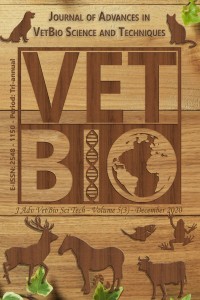Abstract
References
- 1. Hanioğlu, MŞ (2011). Atatürk: An Intellectual Biography. USA: Princeton University Press, New Jersey and Woodstock (Oxfordshire).
- 2. İnan A (2007). Atatürk Hakkında Hatıralarve Belgeler. Istanbul: Türkiye İş Bankası KültürYayınları, Istanbul.
- 3. King, S., Metzger WI., (1968). A new plating medium for the isolation of enteric pathogens I. Hektoen enteric agar. Applied Microbiology, 16, 577-578.
- 4. Ramazan D (2019). Gazi Paşa’yı Doğru Anlamak, .Istanbul: Palme Yayıncılık., Istanbul.
- 5. Waltman, W.D. (2000). Methods for the Cultural Isolation of Salmonella. 362-363. In: C Wray C , A Wwray A (Edseds), Salmonella in Domestic Animals. CABI Publishing, London 362-363.
Abstract
Art portrait of Mustafa Kemal Atatürk was painted using living microorganisms on Hektoen Enteric Agar (HEA) media.
This media is a selective as well as a differential media for the isolation and differentiation of Salmonella and Shigella from patient specimens. HEA contains indicators of lactose fermentation and hydrogen sulfide production; as well as inhibitors to prevent the growth of Gram-positive bacteria. It is named after the Hektoen Institute in Chicago, where researchers developed the agar.
The media contain various sugar sources, none of which can be used by either Shigella or Salmonella, but the medium also includes peptone, which can be used as a carbon source. Since most bacteria can use the sugars in preference to peptone, these bacteria acidify the medium and turn a pH indicator yellow or red. Peptone metabolism by Shigella and Salmonella alkalises the medium, turning a pH indicator blue.
The presence of thiosulfate or ferric ammonium citrate in the medium produces a black precipitate in the presence of H2S, allowing Shigella – which does not produce H2S, and appears as green colonies – to be distinguished from Salmonella – which does produce hydrogen sulfide and appears as black colonies.
The bacteria used to paint this portrait was the Salmonella Enteritidis strain. It used 0.1 µl loops to inoculate the bacteria onto the agar plate. After incubation of the plate for 18-24 hours at 35 ± 2 °C in an aerobic atmosphere, this bacterium's colonies are typically blue-green, as it cannot ferment the lactose, with black centres from the production of H2S gas.
References
- 1. Hanioğlu, MŞ (2011). Atatürk: An Intellectual Biography. USA: Princeton University Press, New Jersey and Woodstock (Oxfordshire).
- 2. İnan A (2007). Atatürk Hakkında Hatıralarve Belgeler. Istanbul: Türkiye İş Bankası KültürYayınları, Istanbul.
- 3. King, S., Metzger WI., (1968). A new plating medium for the isolation of enteric pathogens I. Hektoen enteric agar. Applied Microbiology, 16, 577-578.
- 4. Ramazan D (2019). Gazi Paşa’yı Doğru Anlamak, .Istanbul: Palme Yayıncılık., Istanbul.
- 5. Waltman, W.D. (2000). Methods for the Cultural Isolation of Salmonella. 362-363. In: C Wray C , A Wwray A (Edseds), Salmonella in Domestic Animals. CABI Publishing, London 362-363.
Details
| Primary Language | English |
|---|---|
| Subjects | Structural Biology |
| Journal Section | Letters to Editor |
| Authors | |
| Publication Date | December 31, 2020 |
| Submission Date | July 20, 2020 |
| Acceptance Date | October 14, 2020 |
| Published in Issue | Year 2020 Volume: 5 Issue: 3 |




